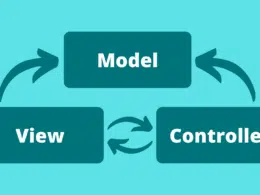Alpha, beta and user acceptance testing (UAT) are common forms of performing user testing, but they possess their differences and are each essential to the software development process.
It’s essential for the system to be tested by the end-user or client, to ensure that it meets their predefined requirements and expectations. Hence, this testing stage or activity is typically placed towards the end of any software development process.
During this user testing stage, the stakeholder or client can give their feedback, input and advice on the system testing, and how the system can be further improved or any requirements that have been left out. No matter how comprehensive the system or release testing has been conducted by the developer, user testing should still be carried out, since they’ll be the ones using the system once it’s released or deployed fully.
Hence, during this stage, real users will experiment with the system’s interface and functionalities. From there, based on the feedback, the developers can determine whether the system is ready to be completely deployed and launched for real users.
Therefore, there are three main types of user testing, acceptance, beta and user acceptance testing (UAT) and this guide will proceed to further explore these testing methods and their unique differences.
With that said, let’s get right into it!
Table of Contents
1. Alpha Testing
This is a preliminary software testing where the system users work closely with the developers to inspect and test the system at the engineer’s site or workplace. Overall, it’s conducted by testers who are present internally within a company or organization and often conducted in laboratory-like conditions and surroundings.
So, it’s termed “alpha” mainly because it’s conducted relatively early in the testing stage. It’s conducted before the system is released to real users or the public. Hence, the build is termed the alpha release. However, this testing requires a long execution cycle according to the number and types of errors. This is because it’s concerned with fixing major issues.
It’s mainly to ensure the quality and effectiveness of the software and resolve bugs that weren’t discovered through any previous tests. Therefore, during alpha testing, the system’s usability and functionality are evaluated and no thorough reliability and security evaluation is conducted.
Often, a black box and white box testing approach or technique are adopted to simulate a real user’s experience to ensure the system operates according to its intended and prespecified requirements. Ideally, a well-presented test plan should be prepared with appropriate test cases. After the testing is complete, minor changes to the system design can be performed.
Overall, obtaining feedback at an earlier stage of the development process can improve the software quality, ease the burden of developers by freeing members for other projects and ultimately reduce the time to release the product to market.
2. Beta Testing
A version of the system is released, known as the beta version, is made accessible and available to users (beta testers) where they can experiment around with the system in a real environment. From there the testers can raise issues and bugs they found with the system to the developers. That way, the developers can obtain direct feedback from the customers, which is one of the primary benefits of employing beta testing. Plus, in contrast to alpha testing, this form of testing only requires around a few weeks to be completed.
Usually, this beta version is released to a limited number of users who volunteer to test the software, known as beta testers. Hence, the build is termed the beta release. Additionally, through this, the end-user obtains more experience about the system through this early access. Beta testing can add value to the system because end-users or customers can evaluate and validate the usability, functionality, compatibility, reliability, robustness and security testing. Patches are usually released for any issues that are uncovered.
Plus, in contrast to alpha testing, where testing is conducted in a separate laboratory at the company, instead, beta testing is performed at the customer’s or end-user’s premises, so it’s also known as real-time testing.
Overall, the goal of beta testing is to study the issues or feedback raised by a group of end-users who are testing the software (beta testers) and the findings will be used to be implemented in future versions of the product. So, these problems will be fixed before it’s released into the market.
3. User Acceptance Testing (UAT)
User Acceptance Testing (UAT) is a form of end-user testing which is mainly for custom systems where the customer or client determines if the system is ready to be accepted by the engineers and fully deployed into the customer environment. These end-users are familiar with the business requirements of the system, so the system is validated against these requirements.
It’s one of the final testing phases which is used to evaluate whether the system complies or fulfils the business environment’s requirements. So, it’s crucial that the testing is done from the end-user’s point of view. Hence, it usually comes after the unit testing, integration testing and system testing phases. Typically, it’s carried out in a separate testing environment with a production-like data setup similar to the black box testing where multiple end-users are involved.
A list of acceptance criteria is outlined, typically based on the system’s usability, performance, responsiveness, availability, scalability, data security, and adherence to the predefined functionalities. Additionally, an acceptance test plan is prepared with appropriate test cases.
Overall the system is tested to see if it can handle the typical tasks in its real-world scenarios and fulfil its prespecified specifications or requirements. All this ensures that the end product functions according to the requirements and expectations, is free from bugs and errors, and the final system is delivered in a proper working condition that’s acceptable for the customers.
Conclusion
To sum up, those are 3 common user testing methodologies that are essential to the software development process. Collectively, their purpose is to ensure that the system in production fulfils the clients’ requirements and expectations before its released for the market or regular use.
On that note, this article delves into deeper these 3 forms of testing (alpha, beta, user acceptance) by explaining their key characteristics, differences, advantages, and so on.
All in all, we hope that you found this guide helpful and it has shed a little more light on the topic of user testing in software engineering. Do comment down below if you have any questions or additional information or experience regarding user testing.
Feel free to share this post with your fellow software engineering enthusiasts or somebody you know that needs help understanding user testing.















